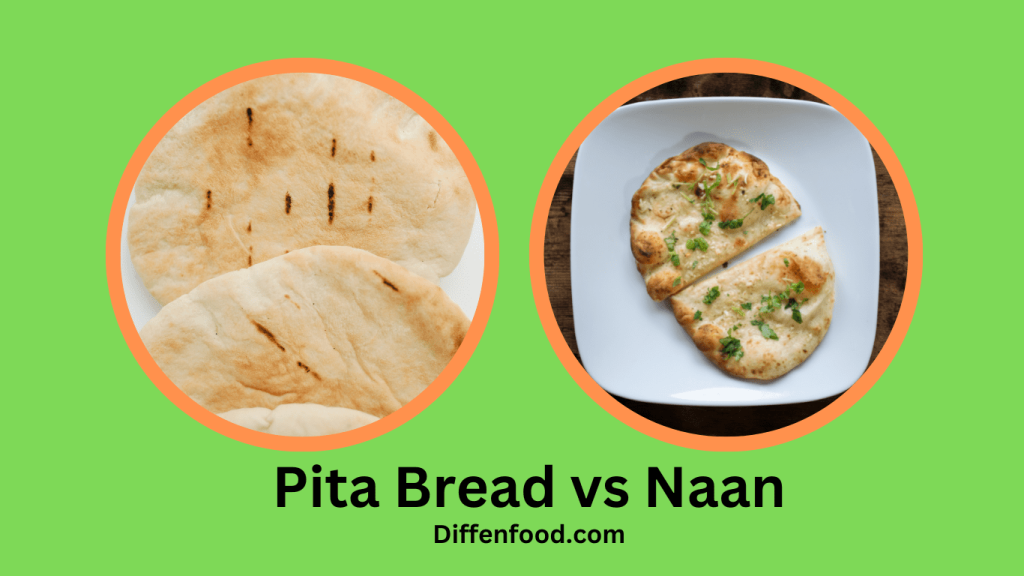
Rice is a staple food for many people around the world, and there are countless varieties to choose from. Two of the most popular long-grain rice varieties are basmati rice and jasmine rice. While both types of rice share some similarities, they also have distinct differences that make them unique. In this article, we’ll explore the details about ” basmati rice vs jasmine rice ” to help you make an informed decision about which type of rice to use in your next meal.
Basmati Rice

Basmati rice is a long-grain rice that originated in the Himalayan foothills of India and Pakistan. It has earned a reputation as the “king of rice” due to its unique flavor, aroma, and texture. BBasmati rice has distinct long and slender grains. These make it famous. They are fragrant, fluffy, and non-sticky when cooked.
Basmati Rice: Aromatic and Flavorful
The name “basmati” derives from the Hindi word for “fragrant,” a fitting description for the rice’s enticing aroma. The grain boasts a nutty and slightly floral flavor that complements an array of dishes. Basmati rice is available in both white and brown varieties, although white basmati is more prevalent in grocery stores.
Aged for Enhanced Flavor and Texture
Basmati rice stands out among other varieties of rice due to its distinctive aging process. The grains of basmati rice are aged for several months, and in some cases, up to two years, before they are sold. During this time, the starches in the grains break down, resulting in a more tender and flavorful texture.
A Nutritious and Low-Calorie Option
In terms of nutrition, basmati rice is a healthy choice, with fewer calories and less fat compared to other rice varieties. Additionally, it contains higher levels of protein and fiber than jasmine rice, a similar type of rice. Basmati rice is also rich in essential minerals like manganese and selenium, making it a nutritious addition to any meal.
Cooking Basmati Rice
Basmati rice is a versatile ingredient that can be used in a range of dishes, including biryanis, pilafs, stir-fries, and salads. To ensure the best texture, it’s essential to rinse the rice thoroughly before cooking to remove excess starch. When cooking, use a ratio of 1:1.5 or 1:2 (rice to water) and bring the water to a boil before adding the rice. Once added, lower the heat, cover the pot, and allow the rice to simmer for approximately 20 minutes or until all the water has been absorbed.

Dasmati rice is a unique and flavorful type of rice that has earned a reputation as the “king of rice.” Its long and slender grains, nutty flavor, and fragrant aroma make it a popular choice for a variety of dishes. With its relatively low fat content and higher protein and fiber content compared to other types of rice, basmati rice is also a nutritious choice for those looking to add more whole grains to their diet.
Jasmine rice

Jasmine rice, also known as fragrant rice or Thai hom mali rice, is a long-grain rice that is native to Thailand and Vietnam. It is named after the jasmine flower due to its fragrance, which is reminiscent of the flower’s aroma. With its popularity on the rise, jasmine rice has become a staple in many Southeast Asian dishes, particularly in Thai and Vietnamese cuisine, and is now widely enjoyed across the globe.
A Sweetly Fragrant and Tender Grain
Jasmine rice is prized for its soft texture and sweet, floral aroma, which is the result of the plant’s natural production of 2-acetyl-1-pyrroline. The grains of jasmine rice are slim and slightly translucent, making them an excellent choice for dishes that require a visually appealing texture, such as salads.
A Versatile Accompaniment
Jasmine rice’s mild flavor makes it an ideal pairing for spicy dishes, as it helps to balance out the heat. It is also a popular choice for serving alongside curries, stir-fries, and grilled meats. The grain’s versatility has made it a staple in many Asian households and restaurants.
Low-Fat and High-Carbohydrate Option
Jasmine rice is a low-fat and high-carbohydrate option when compared to other rice varieties such as basmati. A serving of cooked jasmine rice (one cup) contains around 205 calories, 44 grams of carbohydrates, and less than one gram of fat. Additionally, it is a good source of essential vitamins such as thiamine, niacin, and vitamin B6.
Blood Sugar: High Glycemic Index
The high glycemic index of jasmine rice can lead to a quick rise in blood sugar levels, which may not be suitable for individuals with diabetes or those looking to regulate their blood sugar. However, newer varieties of jasmine rice have a lower glycemic index, making them a better option for individuals with these health concerns.
Jasmine rice is a flavorful and versatile ingredient that is a staple in many Asian cuisines. Its soft texture and floral aroma make it an ideal accompaniment to spicy dishes, and its relatively low fat content and high carbohydrate content make it a good source of energy.
Basmati Rice vs Jasmine Rice: What’s the Differences

Basmati vs. Jasmine Rice: Aroma
One of the most noticeable differences between basmati and jasmine rice is their aroma. Basmati rice boasts a nutty fragrance that permeates the kitchen during cooking, while jasmine rice has a sweet aroma that is similar to popcorn. Although both rice varieties are known for their fragrance, the aroma is distinct.
Basmati vs. Jasmine Rice: Texture
Another significant difference between basmati and jasmine rice is their texture. Basmati rice has longer grains, which result in fluffy and separate grains after cooking. Jasmine rice, with its shorter grains, tends to be stickier. The texture of the rice can affect its suitability for different culinary applications. Basmati rice is ideal for dishes such as pilafs and biryanis that require separate grains, while jasmine rice is better suited for dishes like sushi or stir fry that require a stickier consistency.
Basmati vs. Jasmine Rice: Flavor
In terms of flavor, both basmati and jasmine rice have a subtle taste that doesn’t overpower other ingredients in a dish. Basmati rice has a slightly nutty flavor, while jasmine rice has a natural sweetness that complements spicy or savory flavors.
Basmati vs. Jasmine Rice: Nutrition
Both basmati and jasmine rice are gluten-free and low in fat, making them ideal for those following a gluten-free or low-fat diet. However, there are some differences in their nutritional content. Basmati rice has a higher protein and fiber content than jasmine rice, making it a more filling option. Additionally, basmati rice has a lower glycemic index than jasmine rice, meaning it has a slower impact on blood sugar levels.
Choosing between basmati and jasmine rice depends on personal preference and the dish. Basmati rice is suitable for separate-grain dishes, while jasmine rice is perfect for stickier ones. Aroma and flavor are also factors. Nutritionally, basmati rice has more protein, fiber, and a lower glycemic index than jasmine rice.
Conclusion
Basmati and jasmine rice are two of the most popular long-grain rice varieties in the world. While they share some similarities, they also have distinct differences that make them unique. Both types of rice are delicious and nutritious options that can be used in a wide variety of dishes. When choosing between basmati and jasmine rice, consider the texture, flavor, and nutrition profile to determine which one is the best fit for your needs.
FAQ
Brown rice is generally considered the best rice for weight loss as it contains more fiber and nutrients than white rice, which can help with satiety and overall health. However, any rice can be part of a healthy weight loss diet when consumed in moderation and paired with lean proteins and vegetables.
Yes, diabetics can eat basmati rice in moderation as part of a balanced diet. Basmati rice has a lower glycemic index than many other types of rice, meaning it has a slower impact on blood sugar levels.
Basmati rice is generally easy to digest compared to other types of rice, such as brown rice or wild rice. However, individual digestion varies, so some people may find it more difficult to digest than others.
Jasmine rice pairs well with a variety of meats, including chicken, beef, and pork. Southeast Asian cuisine commonly uses it, particularly in Thai and Vietnamese dishes that often feature seafood as well.
The price of basmati and jasmine rice can vary depending on factors such as the brand, quality, and location. Basmati rice’s longer grain and unique fragrance generally make it more expensive than jasmine rice.


